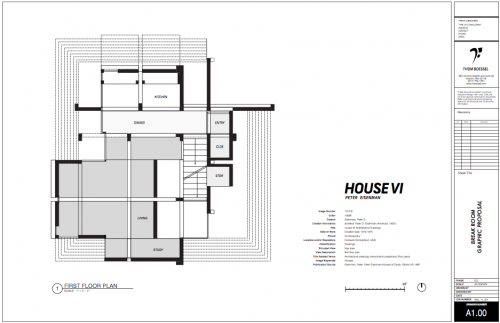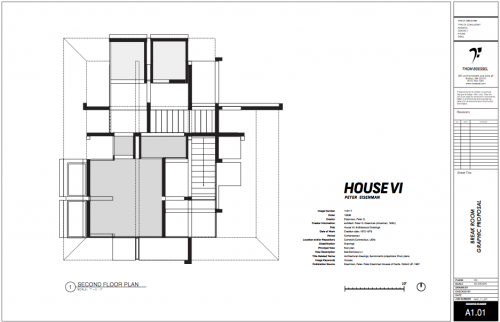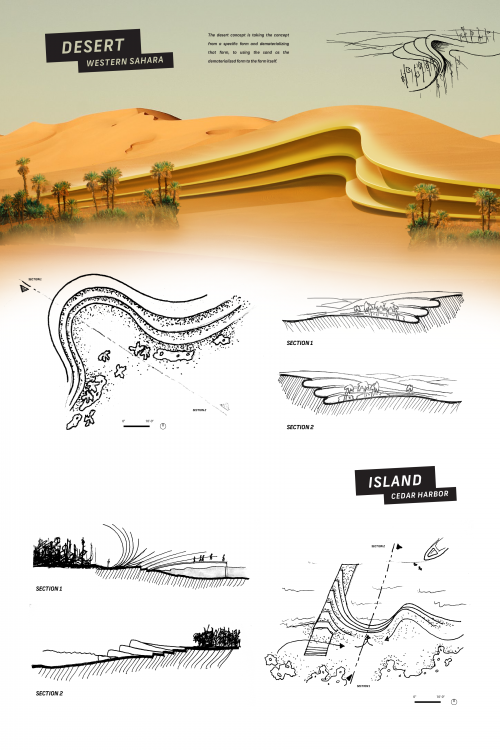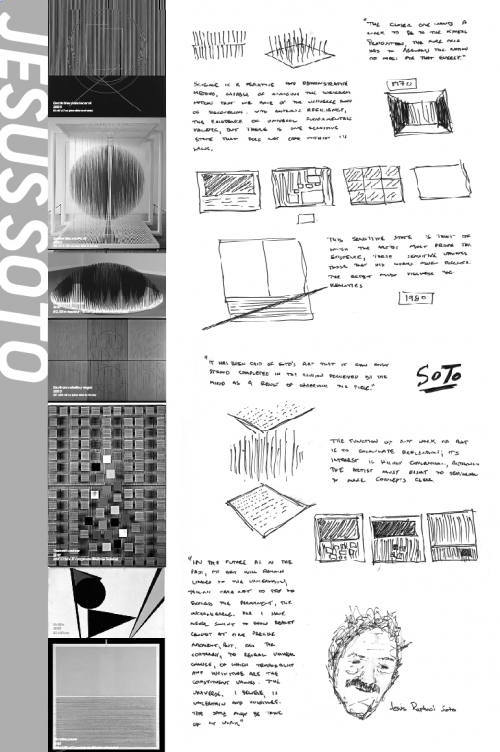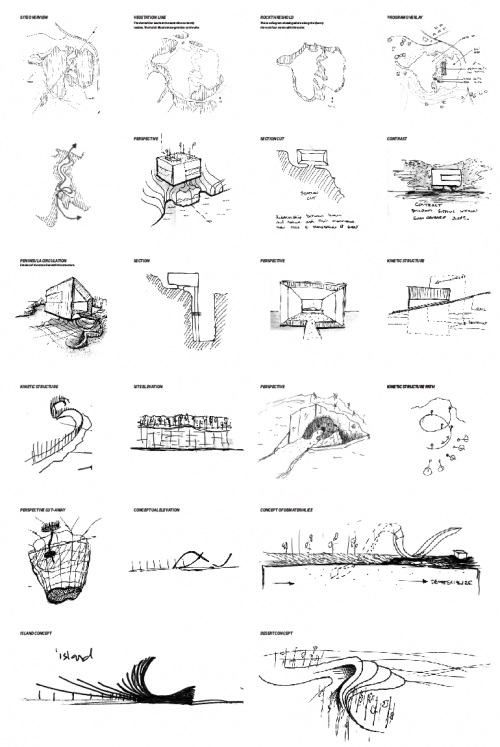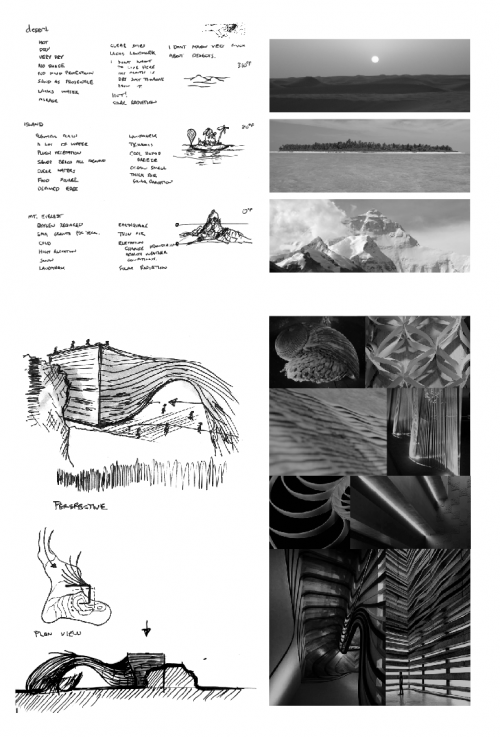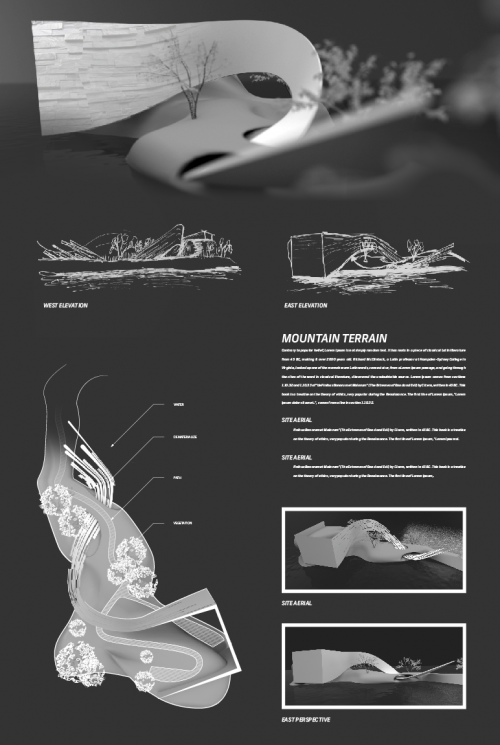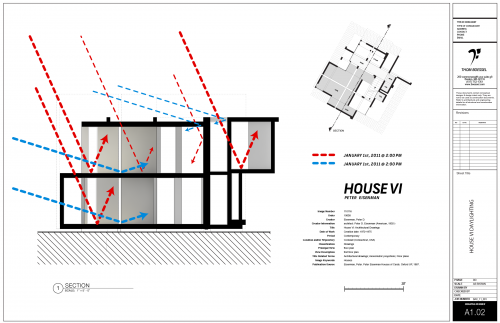Programming and Codes: Public Transit Access
Highlighted is the area that one can reach with public transit from the site. Above is a diagram that illustrates how far one can reach within fifteen minutes with the use of public transit. The highlighted area only displays public transit in conjunction with walking. The dotted line shows the potential for additional area coverage.
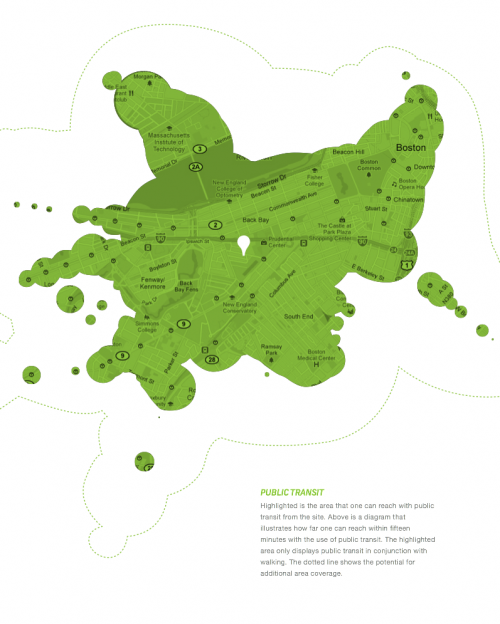
Skydome and Sun Path Diagrams
My friend ‘ecotect,’ has been on the sideline, while I develop sun path diagrams and skydomes by hand!
“We were born of light. The seasons are felt through light. We only know the world as it is evoked by light. . . . To me natural light is the only light, because it has moodit provides a ground of common agreement for manit puts us in touch with the eternal. Natural light is the only light that makes architecture architecture.” – Louis I. Kahn
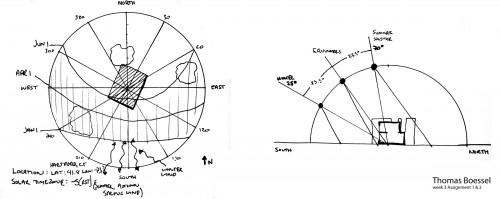
Back to the Via’s in Winter Park
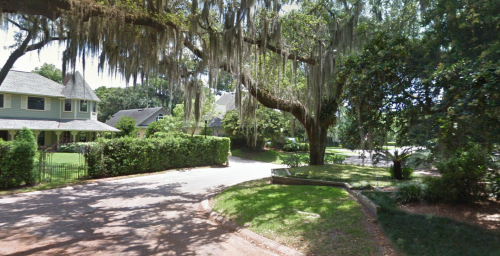
Lisa and myself are back in Winter Park, FL for a couple days before heading back to Boston next week for class. I think we will just take it easy this weekend. The photo above is a tree in front of our house.
Read moreWorking by the pool today

It’s 80 degrees in Winter Park, FL. We are working from home today.
Read moreSiam Sushi – Tallahassee, FL
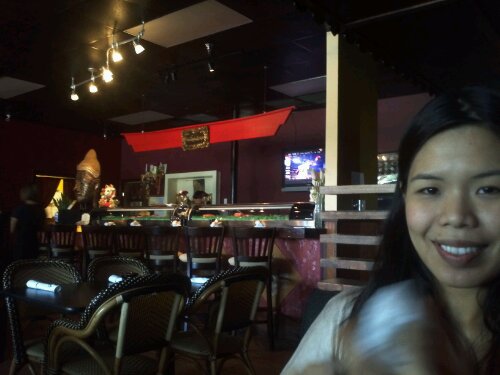
We are driving back to Winter Park, FL. We just stopped in to have some sushi, and pleasantly surprised.
Read moreTallahassee, FL

Getting ready for a night out. This will be our first night in this city. Usually when we are here it is for a football game or college parties. I guess we will see what this city offers other than good football.
Read moreThe Concept of Dwelling Response
The concept of Dwelling, an excerpt on Settlement, by Christian Norberg-Schulz. This excerpt on settlement proposes that the modern city is contrary to his exposition on morphology, topology, and typology. He proposes the modern city has ignored a sense of arrival, which has become a place of “nowhere,” destroying the landscape rather than bringing it close. I would conclude that the modern city does not create a place of “nowhere,” but in fact a place of “everywhere.”
There are a lot of assumptions as to why we have identified a place of arrival. I will take the example of water and show a more simple example of why it is a place of arrival. “The lake gathers the world in a catoptric image, which, since it stands upside-down, reveals the general atmosphere of the place rather than its constituent things. The image, however is not flat, but comprises the height of the sky as well as the depth of the earth. The explanation it offers is therefore unfathomable, the world appears as a place of simultaneous revelation and concealment. No wonder, hence, that man always experienced lakes and bays as significant goals, where he could find rest from his wondering.” This description is quite beautiful, and the storytelling is quite good. Although, when wandering the world, I put precedence on nourishment before that of revelation of heaven and earth coming together. I liken it to the wandering of elephants, they roam for weeks without water. They gather at this place not because of refraction of lightwaves, but for nourishment. Once they are nourished they tend to have intercourse, this is the only time that I can understand heaven and earth coming together.
As a preface the author puts forth an example of Italian hillsides being represented in the peaks and ridges of architecture which shows relationship to its microenvironment. He proceeds to give a contrast position of when a natural center is not present as in a desert. It is easy to understand how a desert does not have a sense of arrival. The vast rolling empty sand hills hardly tells a person that there is a sense of place. We have seen the studies of man walking in an empty field or desert. We tend to walk in circles while we think we are walking in a straight line. I would go as far to say that emptiness without delineation is probably not the best relationship to define space. To go back to the relationship of the italian hillside and to recognize that when rain meets a solid surface it does not pass through it, but in fact rolls along its surface. To understand and to take this concept from nature and apply it to architecture is quite good. Not every relationship with nature should be made. Vast emptiness is probably not the best way to define space, but to take elements that can help us create a better environment for ourselves is what I seek.
The author puts forth that “the loss of figurally defined settlement has brought about a weakened sense of human belonging and thus a dangerous loss of identity.” The manipulation of our environment in Boston has help to establish a healthier space and a unique identity for the public. As in the case of the Charles River Esplanade, there is a sense of arrival, where ‘heaven and earth’ come together. I would like to imagine that this is what the author may see as a decent example of traditional settlement within a modern city. As we know it today, The Charles River Esplanade is a result of the Charles River Dam. It controls the bay from changing water levels, allowing us to walk along a stable waterfront. It is a reflection of what was once there, while using modern technology to allow users to experience it, without the smell of dying oysters and human waste.
The modern city has a way of including our environment in a responsible way, but this is not always the case. Nor do I think that it should always be the case. If an individual wishes to create a space, and not include the public, an individual has every right to do so. It is more important that I put precedence on tolerance of peoples views rather than an idealistic view of what good architecture should be. That is not to say that I accept the destruction of an environment, but instead to have a dialogue in order to develop responsibility. Although the author may define the modern city as a place of ‘nowhere,’ I have to disagree. I see many examples of spaces like what is mentioned before. I can only imagine a world in the future where every piece of land is occupied, and what real connection will we have to gauge what is the natural and what is the unnatural? The author does not disagree with the construction and manipulation of space, but once it has been blurred and constructed so many times this reflection becomes something that cannot be accurately defined. To say our current representation of say an Italian hillside is any better than an idea conceived from ones own mind is not a representation is false. I do not partake in the idea that a majority has to recognize the relationship of a space to its environment in order to create a sense of place. There are moments in architecture, which we may or may not understand what is trying to be said, but we can experience it as he or she wanted us to.
Classes have started at the-BAC
Below is my class list at the-BAC (The Boston Architectural College)
W 4-7 – Programming and Codes
W 7-10 – Lyceum Competition
Online Section – Green Practice / HVAC
In my programming and codes class we were all assigned a reading The Image of a City by Kevin Lynch. We have to familiarize ourselves with the concepts of Lynch’s 5 elements of a city, their interrelationship, and how they join to form a developing whole. In hopes of obtaining a better awareness of the fabric of a city.
- We have to develop diagrams of our theoretical site in relation to those 5 elements of a city.
- Locate and identify each element by a specific name of our choice.
- Explain in a few sentences how each of these elements works for our building in terms of its elements.
